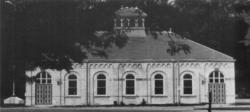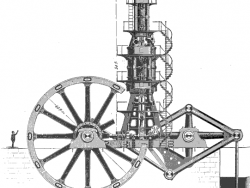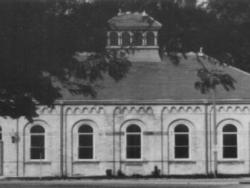This pump, designed by Edwin Reynolds (1831-1909) and built by the Edward P. Allis company, is the major component of one of the earliest water-pollution control systems. It was capable of pumping more than a half billion gallons of water a day, the highest-capacity pump in the world when installed. It still is used during the summer to pump water from Lake Michigan into the Milwaukee River upstream of the downtown area. This maintains a current in the lower portion of the river and greatly reduces the concentration of pollutants.
Reynolds, Edwin

YearAdded:
Image Caption: Milwaukee River Flushing StationEra_date_from: 1888
1992

As one of the large strikes in the Lake Superior geological district, the Chapin Mine was located under a cedar swamp and unminable until it was drained by one of the largest pumping engines of the 1880s. Miners at the Chapin Mine, which began producing ore in 1880, soon tried to sink a deep shaft through 90 feet of quicksand, using enormous pumps driven by compressed air. The sand was frozen using two of the largest refrigeration compressors built, and a sectional cast-iron circular shell lined the D shaft. Mining continued for ten years using conventional pumps to dewater the lower levels.
YearAdded:
Image Credit: Public Domain; Produced prior to 1/1/1923Image Caption: Chapin Mine PumpEra_date_from: 1893
1987
Innovations

As one of the large strikes in the Lake Superior geological district, the Chapin Mine was located under a cedar swamp and unminable until it was drained by one of the largest pumping engines of the 1880s. Miners at the Chapin Mine, which began producing ore in 1880, soon tried to sink a deep shaft… Read More

This pump, designed by Edwin Reynolds (1831-1909) and built by the Edward P. Allis company, is the major component of one of the earliest water-pollution control systems. It was capable of pumping more than a half billion gallons of water a day, the highest-capacity pump in the world when…
Read More

